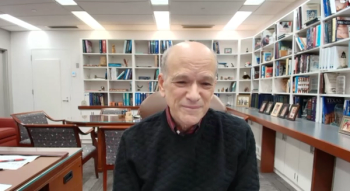CHILD & ADOLESCENT PSYCHIATRY
Mood Disorders
The prevalence of depression has been increasing in youths. Depression in this age group is associated with impairments in peer relationships, family life, and academic performance. Of significant concern is the increased risk of suicide in youths with depression.
Early identification of depression is essential to prevent the devastating sequelae of untreated depression in youth. Parents as well as teenagers should be educated about the symptoms of depression, its course, and treatments for this condition. Clinicians would benefit from educational materials to give to parents of depressed children, as well as updates about depression in youth.
As President (2017-2019) of the American Academy of Child and Adolescent Psychiatry (AACAP), I focused on depression awareness and screening for my presidential initiative. Components of this initiative included education about depression in youths, expansion of the AACAP Depression Resource Center, and collaboration with professional organizations.1 With the participation of a stellar Task Force, the goals of the initiative have been achieved.
A number of resources have been produced as part of this initiative that are useful for clinicians who treat children and adolescents with depression, for parents, and for teenagers. The AACAP Depression Resource Center contains up-to-date information about depression in children and adolescents. Importantly, there are resource sections specifically for clinicians, parents, and youth. The Depression Resource Center contains frequently asked questions about depression such as causes, signs and symptoms, course and treatments. Screening and rating scales for depression, books and Apps related to depression, and treatment resources and videos of clinician experts discussing depression as well as a video on depression for teenagers are included in the Resource Center.
Facts for Families on Depression in Children and Teens provides information for parents and youth about the symptoms of depression. It can be printed in a handout form for parents and teenagers.
The Parents’ Medication Guide on Depression, a joint publication between AACAP and the American Psychiatric Association, has been updated to provide information about medication treatment for depression in this age group. This medication guide is helpful for parents when clinicians plan to initiate medication treatment for depressed children.
AACAP also released a Policy Statement on Depression Screening in Youth. AACAP recommends routine screening for depression in children/adolescents ages 8 and older across health care settings, including primary care as well as mental health care settings.
An edition on Depression in Special Populations was published in Child and Adolescent Psychiatric Clinics of North America.2 The issue includes chapters on child and adolescent depression across settings (child welfare system, juvenile justice system, primary care setting, military setting, schools, colleges and home), comorbid clinical conditions (autism spectrum disorder, hearing impairment, medical conditions, HIV/AIDS, and substance use disorders), and ethnic and cultural identities (African American, Latino, American Indian, and LGBT). The aim of this edition is to assist clinicians who treat youths with depression to better understand unique aspects of assessment, course, and treatment of youths in these diverse populations.
Clinical Essentials on Depression is an online CME course that was launched as part of the initiative. The course on depression uses video and lectures from past ACCAP activities on depression.
A series of publications in the Journal of the American Academy of Child and Adolescent Psychiatry focused on depression and depression screening as part of this initiative. Some of the publications included a master clinician review on parental depression and family health and wellness3; a 13-year follow-up on psychotherapy effects on youth depression4; and mechanisms of change in a school-based depression prevention trial at the transition to high school.5
Although the initiative is complete, the Depression Resource Center will continue to be updated to provide timely information for clinicians, parents, and youth.
Disclosures:
Dr Wagner is Professor and Chair, Department of Psychiatry and Behavioral Sciences, University of Texas Medical Branch, Galveston, TX. She is Immediate Past President of the American Academy of Child and Adolescent Psychiatry, and she is on the Editorial Board of Psychiatric Times.
References:
1. Wagner KD. Presidential address: Depression Awareness and Screening in Children and Adolescents. J Am Acad Child Adolesc Psychiatry. 2018;57:6-7.
2. Ng WY, Wagner KD. Depression in special populations. Child and Adolescent Psychiatric Clinics of North America. Clinics Reviews Articles. New York: Elsevier; 2019.
3. Beardslee WR. Master clinician review: Parental depression and family health and wellness: what clinicians can do and reflections on opportunities for the future. J Am Acad Child Adolesc Psychiatry. 2019;58:759-767.
4. Eckshtain D, Kuppens S, Ugueto A, et al. Meta-analysis: 13-year follow-up of psychotherapy effects on youth depression. J Am Acad Child Adolesc Psychiatry. 2020;59:45-63.
5. Blossom JB, Adrian MC, Vander Stoep A, McCauley E. Mechanisms of change in the prevention of depression: an indicated school-based prevention trial at the transition to high school. J Am Acad Child Adolesc Psychiatry. 2020;59:541-551.


















